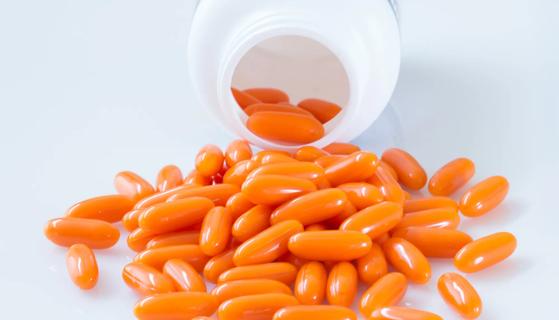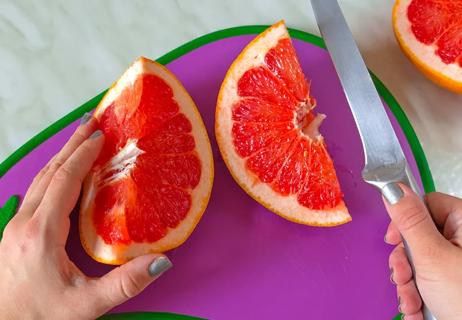Up to 30% of people who take the cholesterol-lowering medication feel aches and soreness

Cholesterol-lowering statins prevent heart attacks and stroke, making them one of the most recommended medications if you have cardiovascular disease or its risk factors.
Advertisement
Cleveland Clinic is a non-profit academic medical center. Advertising on our site helps support our mission. We do not endorse non-Cleveland Clinic products or services. Policy
But sometimes, you may experience statin muscle pain. That side effect may force you to stop taking them — and lose the beneficial protection they provide. Cardiologist Ashish Sarraju, MD, discusses the connection between statins and muscle pain.
We don’t know exactly why statins cause muscle pain in some people but not others. But you may find that you’re unable to tolerate even the lowest dose of two or more statins, due to the adverse effects they have on your muscles, joints or liver.
Statin muscle pain locations include the large muscles of your arms, shoulders, thighs or buttocks on both sides of your body.
“Within a month of starting statin therapy, you may feel aches or weakness in these areas,” says Dr. Sarraju.
There are two kinds of statins: lipophilic and hydrophilic.
Advertisement
Up to 30% of people who try statins experience muscle plan. It’s more common in people ages 65 and above, in women and in those taking the more potent statins.
If you’re experiencing muscle pain and think it may be from your statin medication, here are a few things you can discuss with your healthcare provider.
Sometimes, certain foods or medications prevent your body from eliminating statins at the normal rate, causing statin levels in it to rise. Some common culprits include:
A little bit of a statin is better than none, so your doctor may recommend taking the lowest dose once a week.
For example, you may start off with 2.5 milligrams (mg) of rosuvastatin on a Monday. If you can tolerate it after a few weeks, then you can take 2.5 mg on Mondays and Thursdays. If that doesn’t bother you, then you can consider adding a third day. Another option is to stay on the twice-weekly schedule and raise the dose to 5 mg.
“By introducing statins slowly, 70% of ‘statin intolerant’ patients end up being able to take a statin, 60% of them can take it every day and 10% can take it three times a week,” notes Dr. Sarraju.
If you haven’t tried a different statin, talk to your doctor about switching to one.
Sometimes, muscle pain can be a “nocebo” effect, meaning a symptom related to the act of taking a pill rather than the pill itself, which can be resolved by stopping and “rechallenging” with a different agent. And it may be worth exploring other types of medications such as:
These powerful drugs can lower LDL to rock-bottom levels without triggering muscle pain.
The only disadvantage is price. PCSK9 inhibitors are expensive, and some people may have difficulty getting their prescription approved. That’s why statins remain the more common choice for lowering LDL cholesterol.
And a quick note about CoQ10 supplements, which have been touted as reducing muscle pain in people who take statins: There’s just not enough scientific evidence that it helps.
You may feel muscle soreness after a long workout (or if you’re just starting an exercise routine). But research shows that physical activity may help protect against muscle pain from statins.
Advertisement
If you have high cholesterol, there’s a good chance you’re already working on lifestyle changes like maintaining a healthy weight, following a heart-healthy eating plan and exercising. Focusing on these lifestyle changes may make it possible to lower your statin dosage (which may help reduce your muscle pain) or even stop statins altogether.
It’s time to talk to your healthcare provider if you continue to experience muscle pain or begin to notice other symptoms like:
And while it may be tempting to stop your statin medication “cold turkey,” Dr. Sarraju shares this very important word of warning: Never stop taking a statin without your doctor’s guidance. It can greatly increase your chance of having a heart attack. Your doctor can advise you on how to safely decrease your dosage.
Advertisement
Learn more about our editorial process.
Advertisement

There’s not enough evidence to show that this supplement has any effect on muscle aches from cholesterol-lowering meds

Statin use has been associated with weight gain but the reasons aren’t clear — and the benefits of statins far outweigh the risks

Some statins have been shown to slightly increase your risk of diabetes — but that shouldn’t keep you from taking the medication you need

Statins protect your heart by lowering "bad" cholesterol

Mild heart attacks may cause less damage, but they can still lead to serious complications and require medical attention

A consistent exercise routine can bring you positive results from head to toe

Opt for plant-based foods and consider limiting alcohol and caffeine

Over-the-counter pills, powders, extracts and tinctures can interact with other medications and cause unexpected side effects

If you’re feeling short of breath, sleep can be tough — propping yourself up or sleeping on your side may help

If you fear the unknown or find yourself needing reassurance often, you may identify with this attachment style

If you’re looking to boost your gut health, it’s better to get fiber from whole foods